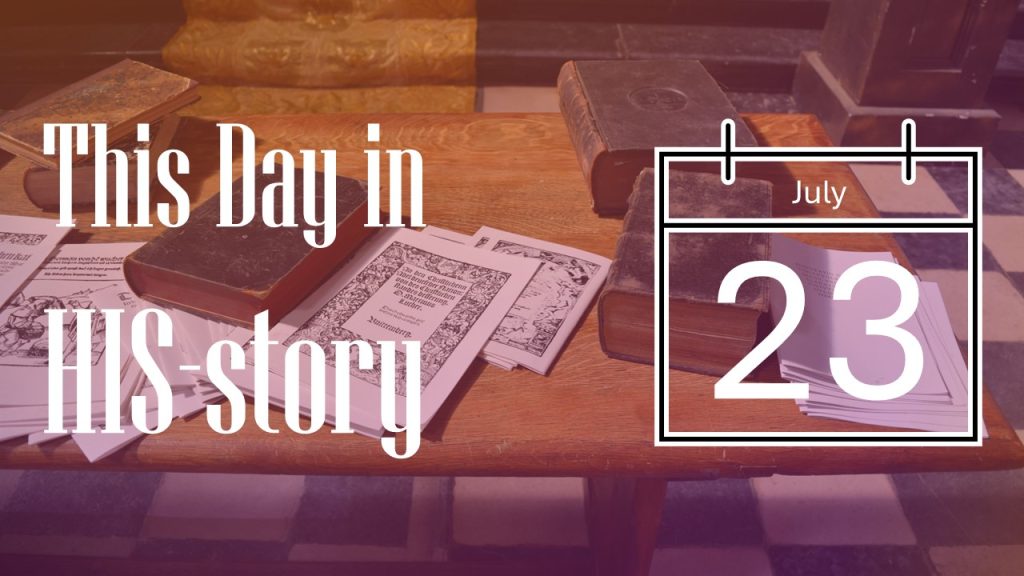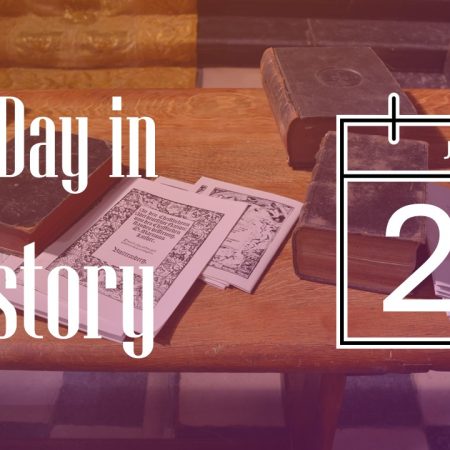
1605
HT: Christian History Institute
John Welsh, first University of Edinburgh graduate ordained to ministry, served as a Presbyterian minister at Selkirk, Kirkcudbright, and Ayr, Scotland. Revival broke out while he was at Ayr.

He held the last position for five years. In those years his faithful witness and prayer saw the transformation of the town into a godly place. He preached for several hours each day. When James VI of Scotland (James I of England) attempted to impose an episcopal form of government on the Scottish church, Welsh stood up for the Scots’ church’s freedoms and the headship of Christ (the Covenanter position). James had him arrested after a sermon and he was taken to the municipal building known as the Tollbooth in Edinburgh which also served as a jail. He was soon transferred to a cruel prison, Blackness Castle in West Lothian, where he was incarcerated for eight months under barbaric conditions before being exiled to France. His final sermon at Ayr was delivered on this morning, 23 July, 1605. It closed with this invocation:
“Now let the Lord give his blessing to his word, and let the Spirit of Jesus, who is the author of this verity, come in and seal up the truth of it in your hearts and souls, for Christ’s sake.”
Banner of Truth 174 (March 1978).
1637
HT: Dan Graves
Charles I, King of Great Britain, wished to enforce his will upon the Churches of England and Scotland. For this and other mistakes, a largely Puritan and Presbyterian parliament eventually lifted his head from his shoulders. Long before that fateful day, however, Charles made one of his most grievous mistakes. He made a tyrant Archbishop of Canterbury, the highest position in the Church of England.
This was none other than William Laud, a stickler for minute forms and details in worship. Like Charles, he wanted to worship as similarly to Catholic forms as the break with Rome would permit. In fact, many English thought that Charles I wanted to return England under the pope. Laud’s various changes and tightening of rules seemed a prelude to this. Things got very ugly.
Laud persecuted Puritans fiercely. The Puritans were those who wished to purify the English church of elements carried over from Catholicism–elements which they considered superstitious or erroneous. The revolt against Charles would be largely a Puritan affair, for Puritans had suffered grievously at his hands. Some, like Alexander Leighton and William Prynne were mutilated and jailed.
One of Laud’s “innovations,” bent on restoring the church to its former practice and power, was the introduction of a new service book. Laud was big on having people bow at the name of Christ and follow all the forms of the service exactly.
The effort to enforce the new service was met with outrage. Some congregations caused such a stir that their bishops wisely did not even try to implement Laud’s orders. In Edinburgh, Scotland, however, at a church attended largely by the king’s local agents, the clergy determined to follow the archbishop’s order. They proceeded to make the attempt on this day, July 23, 1637.

Unfortunately for the dean who performed the revised ritual, the common folk who attended the church went into an immediate uproar, calling him a devil spawn. At that time the women had no pews but sat on stools they themselves brought to church. One, identified as Jenny Geddes, picked up her stool and hurled it at the dean. The outraged populace also threw dozens of other objects at the clergy and, when the bishop remonstrated, a stool was hurled at him, too, but missed its mark.
The crowd had to be cleared by force. Laud’s experiment in restoring the high church services had gone badly awry in Edingburgh. Laud himself was imprisoned in 1640 and brought to trial a few years later on charges of high treason. William Prynne, whom he had mutilated, was set as judge over him and gladly returned a guilty verdict. Laud was beheaded.
